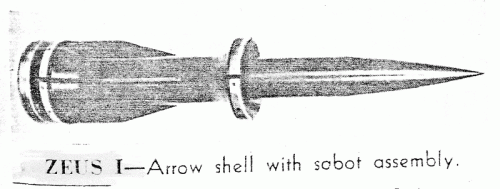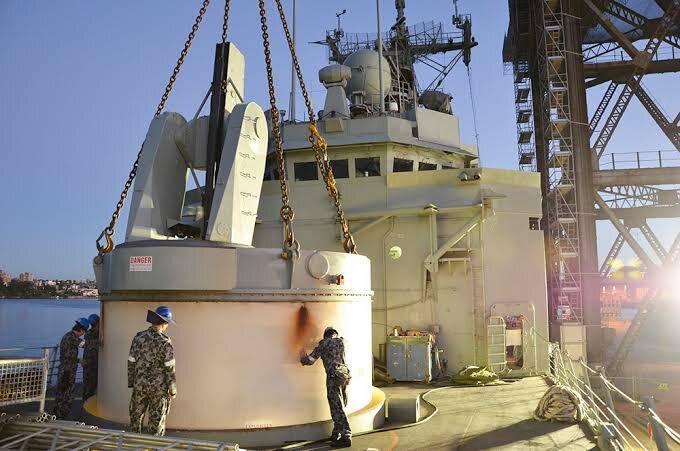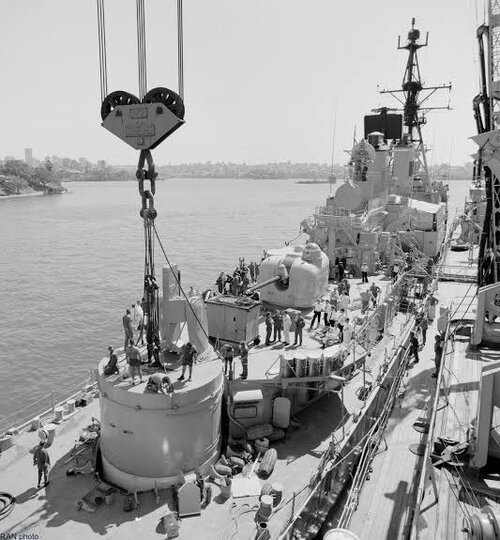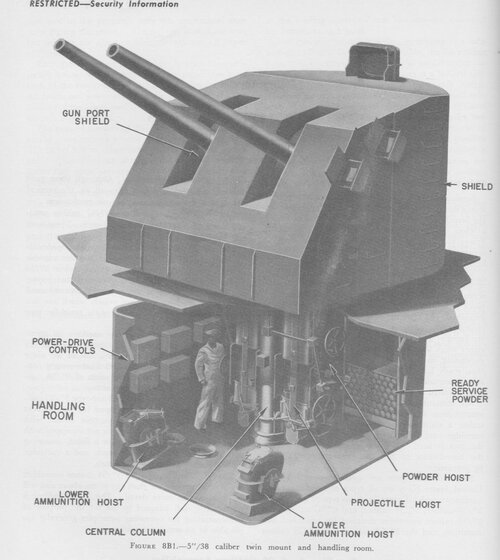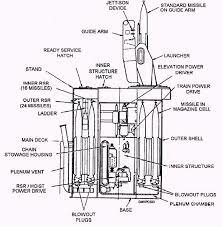Another little known thing, of which once again Designation Systems Net is the only real resource.
Copy of a xeroxed copy found in NHC files:
Photograph that was with the article (yes, i know, poor quality; but....hey....)
Copy of a xeroxed copy found in NHC files:
Naval Aviation Confidential Bulletin January 1949 - - - CONFIDENTIAL
ORDNANCE *
GUIDED MISSILES
ZEUS I LAUNCHED FROM 8-INCH GUN
On 15 September 1948, a guided missile was launched from a gun and deflected around a corner for the first time in the history of naval ordnance. This experimental missile, formerly called the Gun-Launched Guided Missile—Arrow Shell, has recently been named Zeus I by the Munitions Board and designated XSAM-N-8. The Naval Ordnance Laboratory is developing it under the sponsorship of the cognizant branches of the Research Division, Bureau of Ordnance.
Advantage over Conventional Projectile—The present experimental missile, which is fired from an 8-inch, smooth-bore gun, is fin-stabilized in flight rather than spin-stabilized. This reduces the drag and gives the missile, in comparison with the conventional 8"/55 projectile, a shorter time-of-flight to any slant range if it is used as an antiaircraft missile, or a longer range if it is used for bombardment. Although the fins of the missile are 8 inches in diameter, the body is saboted down to 4 inches. The design is thus lighter in weight than the standard 8-inch projectile and achieves a much higher muzzle velocity with the same powder charge. With 75 pounds of powder a muzzle, velocities of 3,150 feet per second have been obtained; with 100 pounds of powder, velocities of 4,000 feet per second.
Another advantage of the fin-stabilized missile is that it is not sensitive to the L/D (length/diameter) ratio. The present 8-inch Zeus I has an L/D ratio of 10, and calculations have shown that an L/D as high as 20 could be used without impairing the stability of the missile. The results of firing to date also indicate that the fin-stabilized missile has a smaller dispersion than the corresponding spin-stabilized Projectile.
Calculations show that if the Zeus I (the Arrow-Shell) is used without guidance, it has a greater single shot kill probability (S. S. K. P.) against maneuvering targets and a greater effective range than any of the present antiaircraft projectiles. However, when one step of guidance is added, calculations show that the S. S. K. P. and the range at which antiaircraft is effective are greatly increased. For example, the S. S. K. P. of the 5"/70. for a certain maneuvering target at 5,000 yards slant range is 0.025, while if one step of guidance is added to Zeus I (the Arrow Shell), its S. S. K. P. is 0.300 or an increase of 1,200 percent. Or to look at it another way, calculations show that for this same maneuvering target, Zeus I with one step of guidance has the same S. S. K. P. at 15.000 yards as the 5"/70 has at 5,000 yards; namely, 0.025. Thus, Zeus I will extend the effective range of antiaircraft fire to three times its present value for this particular S. S. K. P.
The guidance for Zeus I consists of a deflecting charge which is carried in the mid body of the missile and initiated from computers on the ground whenever the angle between the trajectory and the target becomes greater than any predetermined value, in this case 5°. This increases the S. S. K. P. of antiaircraft fire because, if the target maneuvers after the missile has left the gun, an intelligence system—that is, the ground radar and computer—knows where the target is and where the missile must go to secure a hit, and sends a message to the missile when the time has come to trigger the deflection charge. The deflection charge which reacts perpendicularly to the trajectory is sufficient for this weight of missile (72 pounds) to deflect it 5° into the corrected trajectory. The deflection charge produces a side thrust of 60,000 pounds for a period of 0.010 seconds, thus giving a total impulse of 600 lb./sec. to the missile.
Plans are now under way for Zeus II, an Arrow-Shell with guidance and extra propulsion. At the present time, plans call for a study of the possibility of adding some type of rocket propulsion, either solid of liquid propellant to the missile. This would increase the flight velocity over the muzzle velocity, decrease the time of flight to any slant range, and increase the range and the terminal velocity.
Photograph that was with the article (yes, i know, poor quality; but....hey....)

